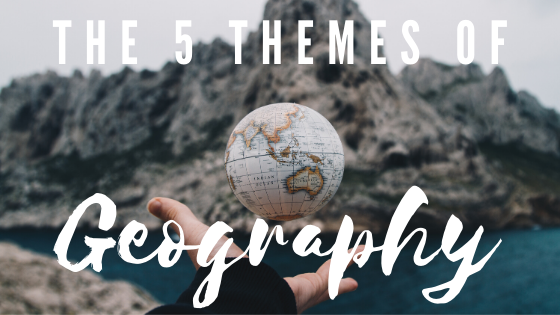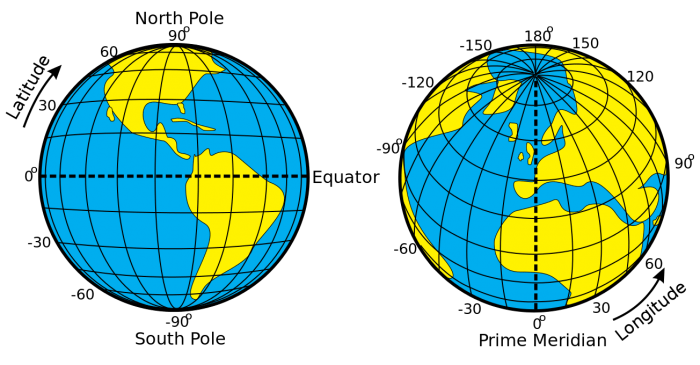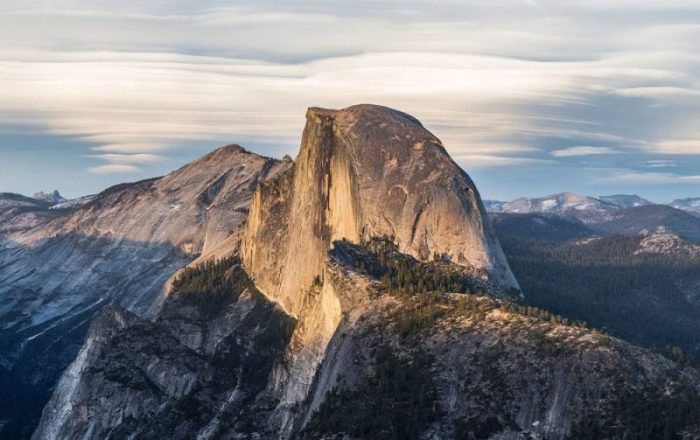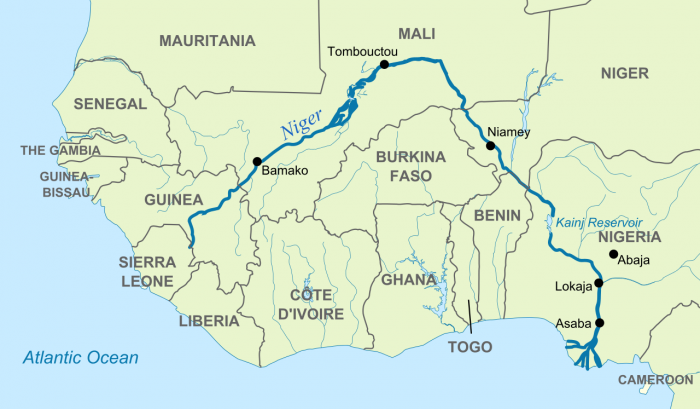
The 5 themes of geography are location, place, human, movement, and regions. These themes provide an educational resource for teachers to categorize and summarize geography. The five themes were initially approved and included in curriculums in 1984 by the Association of American Geographers. The association saw these main tenants of geography as a way to provide best practices to teachers in their classrooms.
“If geography is prose, maps are iconography.” – Lennart Meri
Today, most geography classrooms have in fact adopted the 5 themes of geography as published in the NCGE/AAG publication titled Guidelines for Geographic Education, Elementary, and Schools. The guidelines are no longer in print; however, they have been republished several times with updated content and can be accessed from most major libraries.
Before jumping into the history of the “5 themes of geography” and the details therein, let’s cover what exactly the 5 themes are:
- Location
- Place
- Human-Environmental Interactions
- Movement
- Regions
These five categories were based on experts in the geography field as a way to distill information taught at a number of school grades. They are the basis of standardized teaching in geography.
The Origins Of Standardized Geography Teaching
As noted above, the guidelines published by the NCGE/AAG provide a methodological way to approach teaching geography in schools.
So, what are the guidelines and what specifically do they instruct teachers to teach their students? We’ll dive into that now.
Guidelines for Geographic Education, Elementary, and Schools
The guidelines were a way for geography experts to share an improved method for teaching geographic education. The goal was to combat under the teaching of geography to U.S. children and a result of America’s poor understanding of geography.
“War is God’s way of teaching Americans geography.” — Ambrose Bierce
As a preface, the guidelines present the methodological way geographers conduct scientific inquiry, the tools of the trade, and the rationale behind their conclusions. The guidelines then lay out the foundation of the 5 themes of geography: location, place, human relationships and interactions, movement, and regions.
Today, geography has the advantage of satellite imagery to better understand how our world interacts with humans and vice versa. Sequential satellite images over time present a picture as to how humans have destroyed environments through deforestation or dams. Software programs such as Arc GIS provides geographers to track droughts as they spread across continents and flooding from record rainfall.
Overall geography has seen a step-change in recent decades with the introduction of satellites and their ability to image the Earth through time. Satellite imagery can also be used to determine vegetation speciation, biodiversity, wars, urbanization, etc. It is today, commonly used by every government on Earth to inform on the themes of geography. This provides a way for governments to protect their interests and understand how to respond to external forces.
Antiquated map showing how our understanding of geography has changed through time (Credit: NASA)These five themes regularly appear in the guidelines at different levels of complexity and instruct teachers on how to use them in their curriculum. This includes the expected understanding and outcomes for students at different grade levels from elementary school to middle school to high school. Together, this comprehensive guide provides an update to the previous approach and a systematic way for educators to teach and study geography.
Despite the Geography for Life standards superseding the guidelines noted above in 1994, the five themes continue to be used largely in educational settings.
How Geography Shapes Our Lives
Geography is defined as the study of landscapes, people, places, and environment on Earth. It informs us about our world and bridges natural sciences and human or social sciences. Humans can influence geography as Earth’s natural processes can influence geography. They both act to shape civilizations and history.
The word geography is derived from the Greek word geographia, meaning “Earth description.” Geography is partitioned into two categories: human geography and physical geography. Both interact to influence the spatial aspects of human populations, relationships of humans with plate tectonics, climate impacts on political borders, etc.
| Geography Informs Our Lives: |
| Places | Geography provides clues as to how communities and countries live and work around the world. |
| Environment | Geography provides an avenue to study our natural environment and disruptions to natural systems. |
| Interconnectedness | As our understanding of the Earth’s systems becomes more and more complex, geography provides a way to connect disparate parts of our world and the humans living in it. |
| Climate | The Earth is changing, and geography provides a bedrock for understanding those changes on a global and local scale and how they will influence humans. |
| Human Influence | Humans alter our environment, much like a beaver dams a river. We are known to change our habitat to further suit our needs. |
| The Future | Understanding the unique interactions between humans and the world around us allows us to better make decisions as to our future and how to manage unforseen consequences. |
5 Themes Of Geography
Now that we have a good basis for understanding what geography is and why it helps people understand the world around them, let’s dive into geography’s five themes.
Location
Humans provide every object on Earth with a unique location that helps us order and understand our world. There are two ways to provide the location of an object, both absolute location and relative location. You have used both methods numerous times in your daily life.
Absolute location is a location describes by a coordinate system such as longitude and latitude. Through these coordinates, you can find the exact location of any object in the world.

“Illustration of geographic latitude and longitude of the earth” by Djexplo via Wikipedia is licensed under CC0
Relative location is used colloquially by many of us when giving directions or location to a friend. You may say, I’ll meet you outside of the local coffee shop, or I hid the key under the mat. These are relative locations and require an understanding of the background environment to know the absolute location of the item. For instance, you may know that the key is under the mat but you must also know the location of the house or else the relative location is useless. Therefore, geographers use relative location with a set understanding of the background environment.
Place
Place is the second theme of geography and is defined by the characteristics within the location. Each place has a set of physical and human characteristics that describe what it is and make up our understanding of the place.
For example, a place is distinguished by a name that humans give it. Sometimes names are descriptive of physical characteristics of the place (Half Dome) or human significance (New York City, named by the Dutch as Nieuw Nederland or New Netherland).

“Half Dome from Glacier Point, Yosemite NP – Diliff” by DAVID ILIFF via Wikimedia Commons is licensed under CC-BY-SA 3.0
A place is also defined by the historical significance of a place, such as a long-standing monument, church, building, etc. It can also be defined by how it’s situated in the world, for example at the confluence of several rives. Lastly, it can be defined as the population or culture that inhabits the place.
All of these emphasize the interaction of human and physical characteristics to define what a place is.
Human-Environment Interaction
The next theme is human and environment interaction. As mentioned above, humans interact with their environment daily and this part of geography outlines how the two influence and alter one another.
There are three key concepts of this theme. One is that humans depend on the environment, a dependency that shapes our communities. The second is one of adaption whereby humans will adapt to environmental changes. For instance, how humans organize and alter their actions when there is an incoming hurricane or ongoing drought.
The last is modification, whereby humans modify their environment to suit their needs. Much of the major gulf coast cities, Houston, New Orleans, Miami, etc. are all built on swamplands. Humans have drained the swap and erected concrete barriers to prevent encroaching water.
“The study of geography is about more than just memorizing places on a map. It’s about understanding the complexity of our world, appreciating the diversity of cultures that exists across continents. And in the end, it’s about using all that knowledge to help bridge divides and bring people together.” — Barack Obama
Movement
Movement is defined by how both humans and the products we create travel around the globe. Movement could be the migration of humans across the world as our species became dominant globally. Movement could also be the transferring of information through the internet from one location to another or transportation of people through rail or plane.
Movement provides an understanding of the constant change in our world and tracts the evolution of products, people, and information. Take, for example, iron mined in Sweden then transported by freight and boat to Japan. The iron is then used to build a car, which is transported to the United States for sale. This movement is an integral part of a connected world.
Region
The last of the primary geography themes is region. This is bound by political borders, physical characteristics, climate, etc. Region could define politics or religious beliefs as it does in the border of Israel and Palestine. Rivers can play a role in regional boundaries as the Niger river provides the boundary of countries of Benin and Niger.

“A map of the River Niger, with national boundaries included” by Hel-hama via Wikimedia Commons is licensed under the Creative Commons Attribution-Share Alike 3.0 Unported license.
Region can also be defined by political systems. For instance, the United States is defined by its political system and Canada to the north is defined by its own political region.
Together these 5 themes of geography provide all of us a framework for viewing the world. With these themes, one can define a place by a number of different aspects from how it interacts with humans to how it’s defined by physical or human characteristics.









